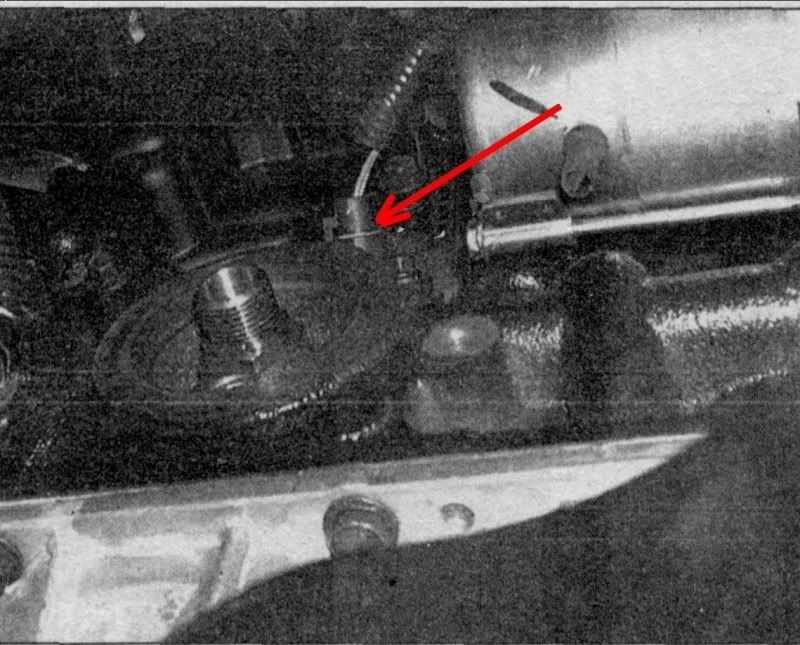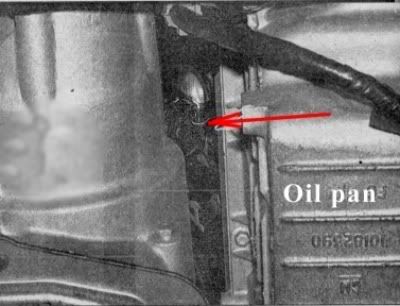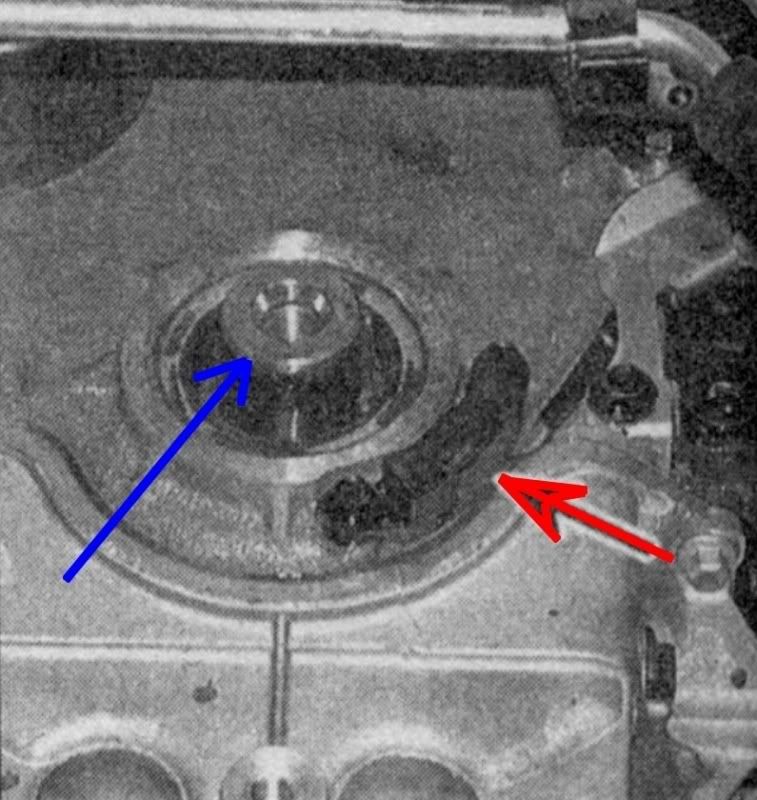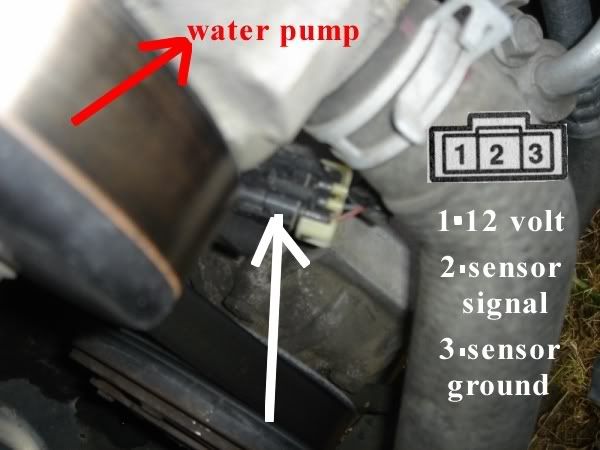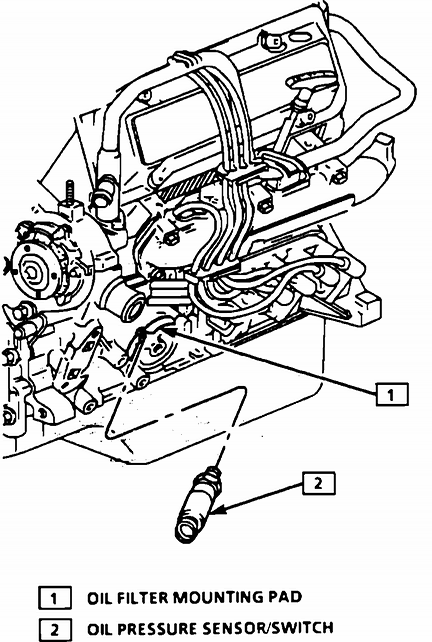Where is the crank sensor located on a car?
The crank sensor is one of the most important sensors in a car, if not the most important. Without the crank sensor or if the sensor itself is faulty, a car might not start or it might have issues while running, like cutting out. This sensor is the one that is going to feed the electronic control unit with a signal that measures the engine's revolutions per minute. Without the crank sensor feeding the RPM signal, the electronic control unit is not able to control the ignition system timing properly.
Common issues regarding a faulty crank sensor are misfiring, backfire, engine experiencing an irregular idle, the acceleration behavior becomes irregular, the engine won't start after heating up but has no problems starting once it cools down again. Most common causes of a crank position sensor failure are by exposure to extreme heat. This problem has been solved with more recent car models because the latest crank sensors are now closed units, which prevents damage from extreme heat, water or other fluids.
The crank sensor is either located on the main crank pulley, the flywheel, the camshaft or on the crankshaft itself. The most common location is at the bottom of the engine block,
How do you locate the camshaft sensor in a car?
Typically, the camshaft sensor is located at the top of the engine to the front and mounted near the crankshaft in front of a wheel. The wheel has windows or slots that allow the sensor to count each revolution of the camshaft. The sensor is readily accessible if it needs to be changed. However, some imported cars, including Hondas, have the crankshaft and camshaft sensors inside of the distributor, requiring replacement of the entire distributor for this type of vehicle.
Signs of a failing camshaft sensor may include the engine misfiring or hesitating while accelerating, a check engine light, and problems starting or immediately dying after starting. A standard set of socket wrenches or set of box wrenches is the only tool needed to change a faulty sensor. If you have a multimeter, you can remove and test the sensor. Connect it to the meter, set the meter to detect resistance and rapidly pass a magnet in front of its eye. You should see significant jumps in the reading on the meter as the magnet passes if the sensor is good.
To replace the camshaft sensor, remove it by depressing the side tabs on the electrical connector wired to the camshaft sensor and unplug it. Remove the retaining bolt holding the sensor in place and gently twist the sensor back and forth as you pull it free. Insert the new sensor, and twist it into place in a similar manner. Tighten the retaining bolt, and plug the connector in to complete the replacement.
What are some common problems with crankshaft position sensors?
Common problems with crankshaft position sensors include connector pins that are loose, cracks in the sensors and improper gaps between the reluctor wheel and the sensor tip. Faulty sensors can prevent a car from starting and cause engine stalling. Failed crankshaft position sensors can activate the check engine light.
When crankshaft position sensors are failing, they cause sporadic stalling or long cranking in damp weather, or in hot engines. Hot cars that stall but start again once their engines cool may have deteriorating crankshaft position sensors. Using an oscilloscope to check the sensors' signals is a precise way of testing the equipment. Hall-type sensors require testing the ground signal and the reference voltage, while pick-up coil type sensors require checking the sensors' resistance. Technicians replace the sensors when the resistance is greater than or less than a vehicle's manual specifies.
Where is the crankshaft position sensor located on a 2002 dodge intrepid?
On the transmission bellhousing.
Where is the crankshaft position sensor on a 2002 Dodge Intrepid with a 2.7L engine located?
It's located at the right (passenger) side of the transaxle bellhousing.
Where is the crankshaft position sensor (CKP sensor) located on a 2005 dodge neon?
it mounts in to the bell housing on it right back on the transmission,
Where is the crankshaft position sensor located on a 2002 passat 1.8t 4cyl?
IT IS ON THE REAR OF THE ENGINE BLOCK. IT IS AN EXTERNAL SENSOR.
Where is the crankshaft position sensor located 2002 Sebring?
The crankshaft position sensor is located behind the engine (the side facing the vehicle's firewall) above the oil filter adapter.
Somebody know where are located the crankshaft position sensor & speed sensor in Sentra 2002 SE-R 2.5L?
Nissan Sentra 2002 SE-R 2.5L has trouble code P0335 & P0725.
its on the over head cam it spins with the cam andknows when valves open sensing the posistion of crank speed sensor is cable coming out of top of trans
Where is the crankshaft position sensor in 1995 maxima?
Just below the crank shaft pulley on the passengers side bottom of the motor. Some times soaked in oil it is usually not the problem. When 1995's display Crank shaft circuit codes I look to the engine wiring harness. Where the harness flexes over the right strut area is where the wire is broken or shorting.
Crankshaft position sensor replacement?
Crankshaft position sensor replacement? how much does it cost to replace a crank shaft position sensor on a 1995 nissan maxima?
Located under the crank pulley passengers side crank sensor held in place with two 10mm bolts and one plug can become covered with metal filings (bad crank pulley) grease oil from a leaking crank seal and worse the engine wiring harness may develop a open circuit causing the crank sensor and no start condition. Better have a good auto technician check above and hopefully it is a easy repair.
Where is crankshaft position sensor for 1997 maxima?
there may be two. one on the block facing the radiator fan close to the trans, the other under the crank pulley
Where is the crankshaft position sensor on a 1992 Nissan Maxima 3.0?
in the distrubator.
Where is a crankshaft position sensor located on a 1995 Dodge Stratus ES V6 2.5L?
The crankshaft position sensor is located below the heater inlet/outlet tubes below the distributor. It is held in pace by a 10 mm nut. You will need to remove the speed servo mounted on the left fender. I found that it is easier to access it by removing the left front tyre and the splatter shield and go through the wheel well.
Where is the crankshaft position sensor on a 1995 Dodge Avenger?
look directly under the air intake hose as it attaches to the carburator. Directly below it is the distributor. Directly below that is the crankshaft position sensor. Its a small plug with a connector on it entering the engine. When I pulled mine off the insulator that attaches to the end was gone. It cost around 70$ to buy.
Where is the crankshaft position sensor located on a 1995 Chrysler LHS?
On our 1994 LHS it is located on the passenger side of the engine down by where the transmission is bolted to it. I had to remove the air intake pipe and push it out of the way, squeeze my left arm down through the opening to the left of the strut almost to my elbow and follow the connector wires to the sensor. One 10mm socket removed the single bolt holding the sensor (a tight fit ). A quarter turn of the ratchet was enough to loosen the bolt so I could unscrew it with my fingers. Wiggle the old one out and replace. Takes about 15 minutes.
Where is crankshaft position sensor located on 1995 Leabre 3.8?
I have a 1993 it is located behind the dampher or (Harmonic balancer). Be sure to adjust the gap to specifications on the new one usually held by 2 bolts. I got lucky and only had 1 bolt with a preset pin to hold in place. Your need a puller to remove and can be trying.









